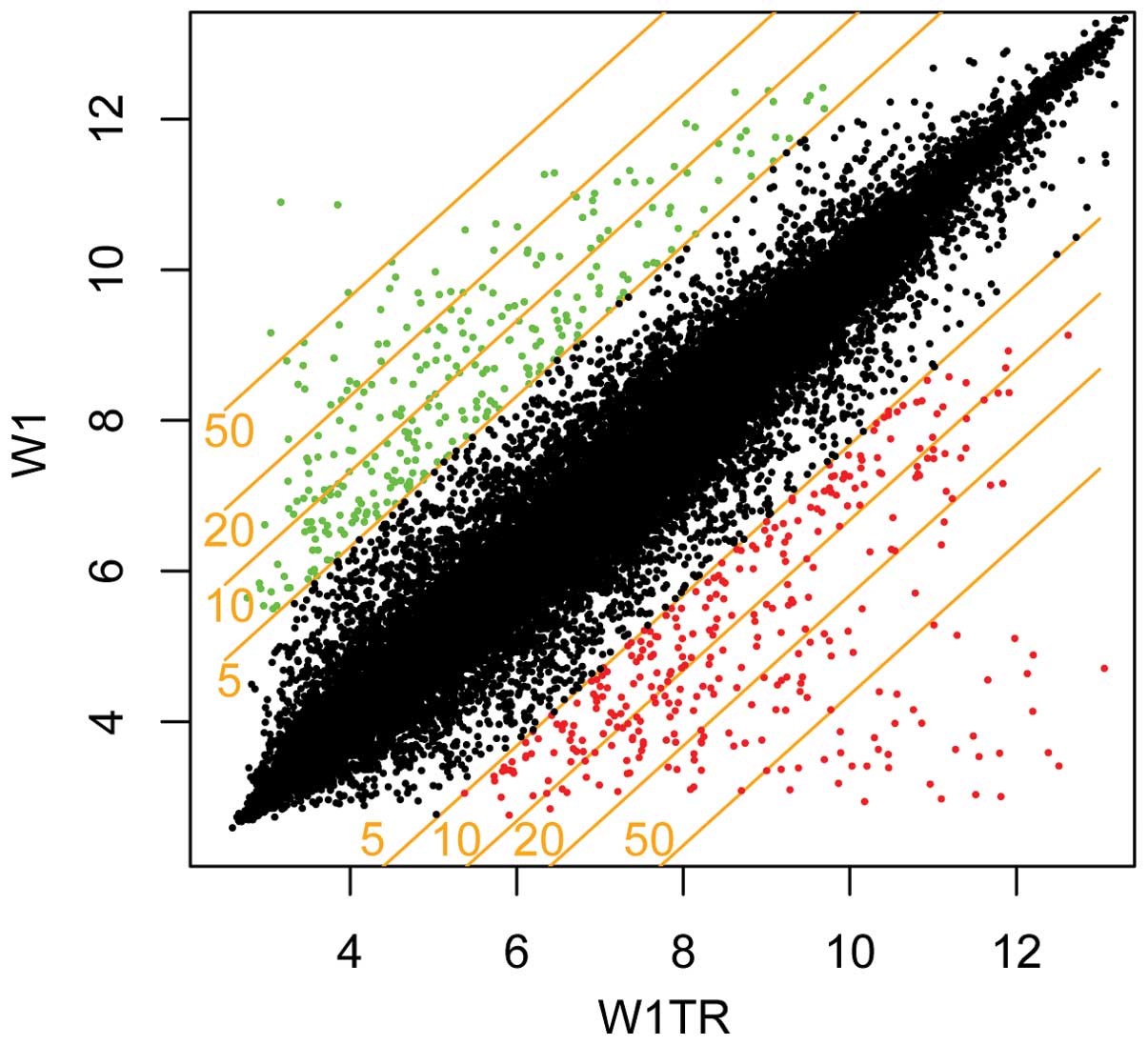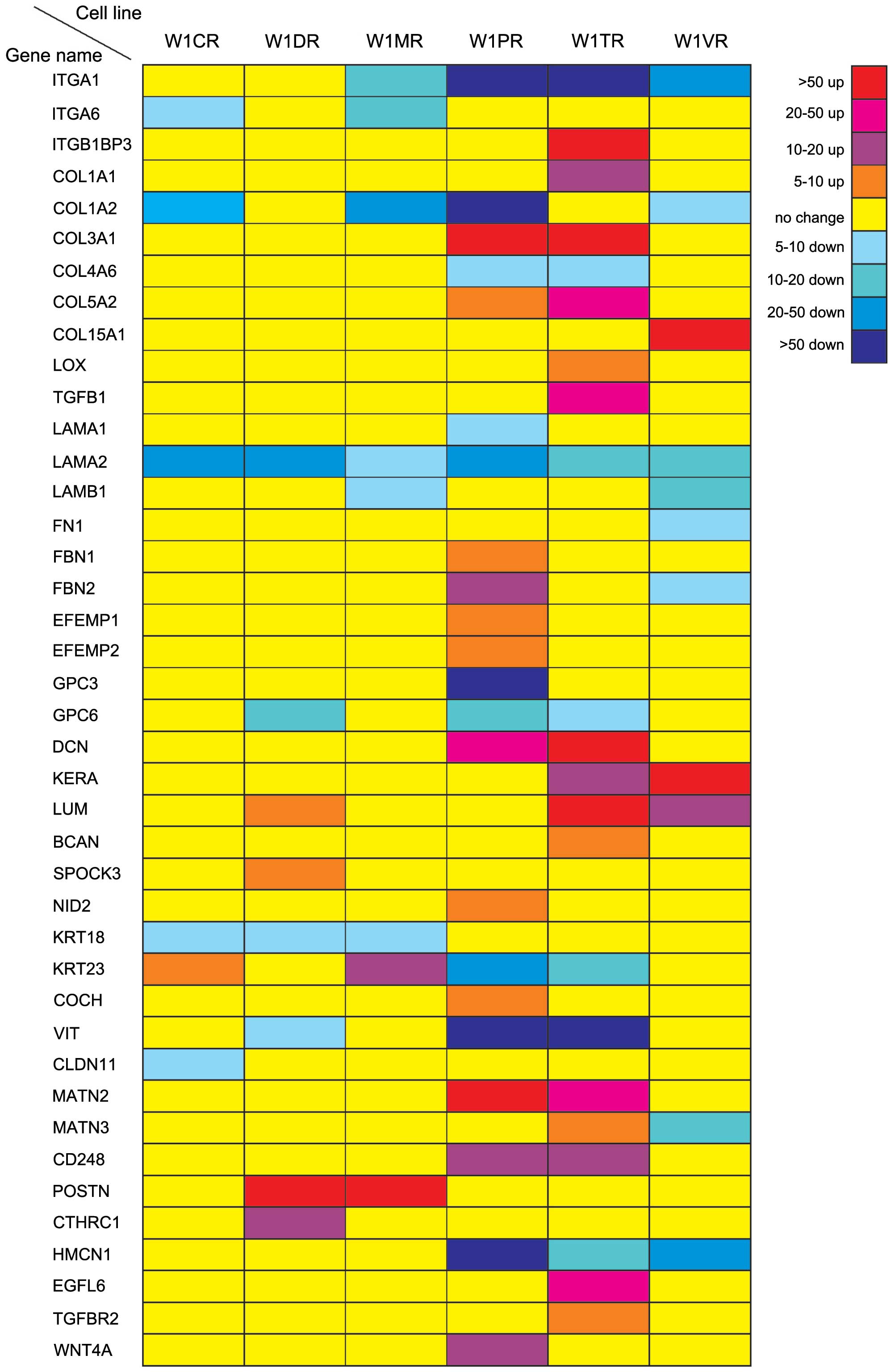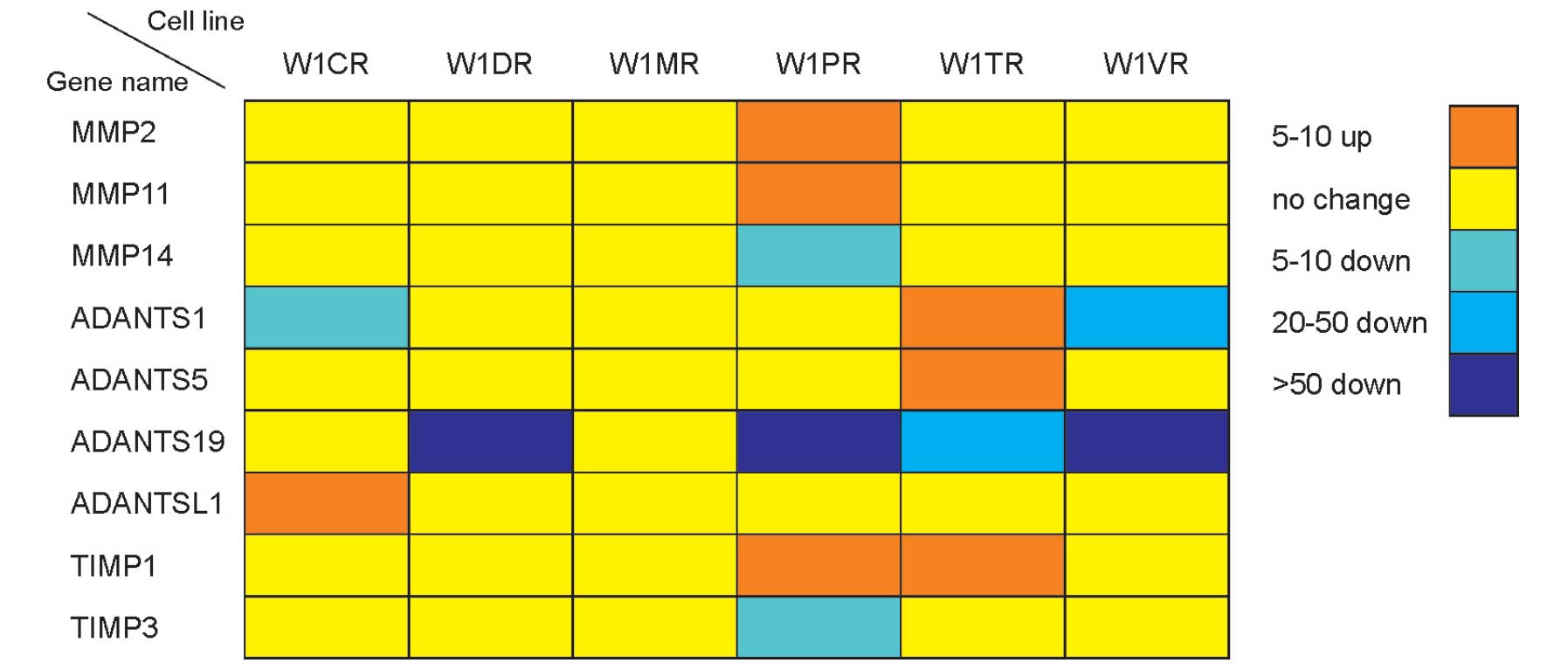|
1
|
Garcia M, Jemal A, Ward EM, et al: Global
cancer facts & figures 2007. American Cancer Society; Atlanta,
GA: 2007
|
|
2
|
Kurman RJ: Blaustein’s Pathology of the
Female Genital Tract. 5th edition. Springer; New York, NY: 2002
|
|
3
|
Parmar MK, Ledermann JA, Colombo N, du
Bois A, Delaloye JF, Kristensen GB, et al: Paclitaxel plus
platinum-based chemotherapy versus conventional platinum-based
chemotherapy in women with relapsed ovarian cancer: the
ICON4/AGO-OVAR-2.2 trial. Lancet. 361:2099–2106. 2003. View Article : Google Scholar : PubMed/NCBI
|
|
4
|
Pujade-Lauraine E, Wagner U,
Aavall-Lundqvist E, et al: Pegylated liposomal doxorubicin and
carboplatin compared with paclitaxel and carboplatin for patients
with platinum-sensitive ovarian cancer in late relapse. J Clin
Oncol. 28:3323–3329. 2010. View Article : Google Scholar : PubMed/NCBI
|
|
5
|
Sehouli J, Stengel D, Oskay-Oezcelik G,
Zeimet AG, Sommer H, Klare P, et al: Non platinum topotecan
combinations versus topotecan alone for recurrent ovarian cancer:
results of a phase III study of the North-Eastern German Society of
Gynecological Oncology Ovarian Cancer Study Group. J Clin Oncol.
26:3176–3182. 2008. View Article : Google Scholar
|
|
6
|
Choi CH: ABC transporters as multidrug
resistance mechanisms and the development of chemosensitizers for
their reversal. Cancer Cell Int. 5:302005. View Article : Google Scholar : PubMed/NCBI
|
|
7
|
Stupack DG and Cheresh DA: Get a ligand,
get a life: integrins, signaling and cell survival. J Cell Sci.
115:3729–3738. 2002. View Article : Google Scholar : PubMed/NCBI
|
|
8
|
Sethi T, Rintoul RC, Moore SM, MacKinnon
AC, Salter D, Choo C, et al: Extracellular matrix proteins protect
small cell lung cancer cells against apoptosis: a mechanism for
small cell lung cancer growth and drug resistance in vivo. Nat Med.
5:662–668. 1999. View
Article : Google Scholar : PubMed/NCBI
|
|
9
|
Işeri OD, Kars MD, Arpaci F and Gündüz U:
Gene expression analysis of drug-resistant MCF-7 cells:
implications for relation to extracellular matrix proteins. Cancer
Chemother Pharmacol. 65:447–455. 2010.PubMed/NCBI
|
|
10
|
Jain RK: The next frontier of molecular
medicine: delivery of therapeutics. Nat Med. 4:655–657. 1998.
View Article : Google Scholar : PubMed/NCBI
|
|
11
|
Tannock IF, Lee CM, Tunggal JK, Cowan DS
and Egorin MJ: Limited penetration of anticancer drugs through
tumor tissue: a potential cause of resistance of solid tumors to
chemotherapy. Clin Cancer Res. 8:878–884. 2002.PubMed/NCBI
|
|
12
|
Netti PA, Berk DA, Swartz MA, Grodzinsky
AJ and Jain RK: Role of extracellular matrix assembly in
interstitial transport in solid tumors. Cancer Res. 60:2497–2503.
2000.PubMed/NCBI
|
|
13
|
Jain RK: Transport of molecules in the
tumor interstitium: a review. Cancer Res. 47:3039–3051.
1987.PubMed/NCBI
|
|
14
|
Di Paolo A and Bocci G: Drug distribution
in tumors: mechanisms, role in drug resistance, and methods for
modification. Curr Oncol Rep. 9:109–114. 2007.PubMed/NCBI
|
|
15
|
St Croix B, Flørenes VA, Rak JW, Flanagan
M, Bhattacharya N, Slingerland JM and Kerbel RS: Impact of the
cyclin-dependent kinase inhibitor p27Kip1 on resistance of tumor
cells to anticancer agents. Nat Med. 2:1204–1210. 1996.PubMed/NCBI
|
|
16
|
St Croix B and Kerbel RS: Cell adhesion
and drug resistance in cancer. Curr Opin Oncol. 9:549–556.
1997.
|
|
17
|
Dalton WS: The tumor microenvironment as a
determinant of drug response and resistance. Drug Resist Updat.
2:285–288. 1999. View Article : Google Scholar : PubMed/NCBI
|
|
18
|
Chauhan VP, Stylianopoulos T, Boucher Y
and Jain R: Delivery of molecular and nanoscale medicine to tumors:
transport barriers and strategies. Annu Rev Chem Biomol Eng.
2:281–298. 2011. View Article : Google Scholar : PubMed/NCBI
|
|
19
|
Ramanujan S, Pluen A, McKee TD, Brown EB,
Boucher Y and Jain RK: Diffusion and convection in collagen gels:
implications for transport in the tumor interstitium. Biophys J.
83:1650–1660. 2002. View Article : Google Scholar : PubMed/NCBI
|
|
20
|
Dietel M, Bals U, Schaefer B, Herzig I,
Arps H and Zabel M: In vitro prediction of cytostatic drug
resistance in primary cell cultures of solid malignant tumours. Eur
J Cancer. 29A:416–420. 1993. View Article : Google Scholar : PubMed/NCBI
|
|
21
|
Leonard GD, Fojo T and Bates SE: The role
of ABC transporters in clinical practice. Oncologist. 8:411–424.
2003. View Article : Google Scholar : PubMed/NCBI
|
|
22
|
Januchowski R, Zawierucha P, Andrzejewska
M, Ruciński M and Zabel M: Microarray-based detection and
expression analysis of ABC and SLC transporters in drug-resistant
ovarian cancer cell lines. Biomed Pharmacother. 67:240–245. 2013.
View Article : Google Scholar : PubMed/NCBI
|
|
23
|
Januchowski R, Wojtowicz K,
Sujka-Kordowska P, Andrzejewska M and Zabel M: MDR gene expression
analysis of six drug-resistant ovarian cancer cell lines. Biomed
Res Int. 2013:2417632013. View Article : Google Scholar : PubMed/NCBI
|
|
24
|
Januchowski R, Zawierucha P, Ruciński M,
Nowicki M and Zabel Maciej: Extracellular matrix proteins
expression profiling in chemoresistant variants of the A2780
ovarian cancer cell line. Biomed Res Int. 2014:3658672014.
View Article : Google Scholar : PubMed/NCBI
|
|
25
|
Liang Y, Meleady P, Cleary I, McDonnell S,
Connolly L and Clynes M: Selection with melphalan or paclitaxel
(Taxol) yields variants with different patterns of multidrug
resistance, integrin expression and in vitro invasiveness. Eur J
Cancer. 37:1041–1052. 2001. View Article : Google Scholar : PubMed/NCBI
|
|
26
|
Correia AL and Bissell MJ: The tumor
microenvironment is a dominant force in multidrug resistance. Drug
Resist Updat. 15:39–49. 2012. View Article : Google Scholar : PubMed/NCBI
|
|
27
|
Varma RR, Hector SM, Clark K, Greco WR,
Hawthorn L and Pendyala L: Gene expression profiling of a clonal
isolate of oxaliplatin-resistant ovarian carcinoma cell line
A2780/C10. Oncol Rep. 14:925–932. 2005.PubMed/NCBI
|
|
28
|
Sherman-Baust CA, Weeraratna AT, Rangel
LB, Pizer ES, Cho KR, Schwartz DR, Shock T and Morin PJ: Remodeling
of the extracellular matrix through overexpression of collagen VI
contributes to cisplatin resistance in ovarian cancer cells. Cancer
Cell. 3:377–386. 2003. View Article : Google Scholar : PubMed/NCBI
|
|
29
|
Ismail RS, Baldwin RL, Fang J, Browning D,
Karlan BY, Gasson JC and Chang DD: Differential gene expression
between normal and tumor-derived ovarian epithelial cells. Cancer
Res. 60:6744–6749. 2000.PubMed/NCBI
|
|
30
|
Brown E, McKee T, diTomaso E, Pluen A,
Seed B, et al: Dynamic imaging of collagen and its modulation in
tumors in vivo using second-harmonic generation. Nat Med.
9:796–800. 2003. View
Article : Google Scholar : PubMed/NCBI
|
|
31
|
Stylianopoulos T, Diop-Frimpong B, Munn LL
and Jain RK: Diffusion anisotropy in collagen gels and tumors: the
effect of fiber network orientation. Biophys J. 99:3119–3128. 2010.
View Article : Google Scholar : PubMed/NCBI
|
|
32
|
Csiszar K: Lysyl oxidases: a novel
multifunctional amine oxidase family. Prog Nucleic Acid Res Mol
Biol. 70:1–32. 2001. View Article : Google Scholar : PubMed/NCBI
|
|
33
|
El-Haibi CP, Bell GW, Zhang J, Collmann
AY, Wood D, Scherber CM, Csizmadia E, Mariani O, Zhu C, Campagne A,
Toner M, Bhatia SN, Irimia D, Vincent-Salomon A and Karnoub AE:
Critical role for lysyl oxidase in mesenchymal stem cell-driven
breast cancer malignancy. Proc Natl Acad Sci USA. 109:17460–17465.
2012. View Article : Google Scholar : PubMed/NCBI
|
|
34
|
Baker AM, Cox TR, Bird D, Lang G, Murray
GI, Sun XF, Southall SM, Wilson JR and Erler JT: The role of lysyl
oxidase in SRC-dependent proliferation and metastasis of colorectal
cancer. J Natl Cancer Inst. 103:407–424. 2011. View Article : Google Scholar : PubMed/NCBI
|
|
35
|
Shi W, Yang B, Li X, Sun S, Wang L and
Jiao S: The effect of lysyl oxidase polymorphism on susceptibility
and prognosis of nonsmall cell lung cancer. Tumour Biol.
33:2379–2383. 2012. View Article : Google Scholar : PubMed/NCBI
|
|
36
|
Wilgus ML, Borczuk AC, Stoopler M,
Ginsburg M, Gorenstein L, Sonett JR and Powell CA: Lysyl oxidase: a
lung adenocarcinoma biomarker of invasion and survival. Cancer.
117:2186–2191. 2011. View Article : Google Scholar : PubMed/NCBI
|
|
37
|
Ween MP, Oehler MK and Ricciardelli C:
Transforming growth factor-beta-induced protein (TGFBI)/(βig-H3): a
matrix protein with dual functions in ovarian cancer. Int J Mol
Sci. 13:10461–10477. 2012.
|
|
38
|
Li B, Wen G, Zhao Y, Tong J and Hei TK:
The role of TGFBI in mesothelioma and breast cancer: association
with tumor suppression. BMC Cancer. 12:2392012. View Article : Google Scholar : PubMed/NCBI
|
|
39
|
Ma C, Rong Y, Radiloff DR, Datto MB,
Centeno B, Bao S, Cheng W, Lin F, Jiang S, Yeatman TJ and Wang XF:
Extracellular matrix protein βig-h3/TGFBI promotes metastasis of
colon cancer by enhancing cell extravasation. Genes Dev.
22:308–321. 2008.
|
|
40
|
Timpl R, Rohde H, Robey PG, Rennard SI,
Foidart JM and Martin GR: Laminin - a glycoprotein from basement
membranes. J Biol Chem. 254:9933–9937. 1979.PubMed/NCBI
|
|
41
|
Shibata K, Kikkawa F, Nawa A, Suganuma N
and Hamaguchi M: Fibronectin secretion from human peritoneal tissue
induces Mr 92,000 type IV collagenase expression
and invasion in ovarian cancer cell lines. Cancer Res.
57:5416–5420. 1997.PubMed/NCBI
|
|
42
|
Seeliger H, Camaj P, Ischenko I, Kleespies
A, De Toni EN, Thieme SE, Blum H, Assmann G, Jauch KW and Bruns CJ:
EFEMP1 expression promotes in vivo tumor growth in human
pancreatic adenocarcinoma. Mol Cancer Res. 7:189–198. 2009.
View Article : Google Scholar
|
|
43
|
Lin H, Huber R, Schlessinger D and Morin
PJ: Frequent silencing of the GPC3 gene in ovarian cancer
cell lines. Cancer Res. 59:807–810. 1999.
|
|
44
|
Kim H, Xu GL, Borczuk AC, Busch S, Filmus
J, Capurro M, Brody JS, Lange J, D’Armiento JM, Rothman PB and
Powell CA: The heparan sulfate proteoglycan GPC3 is a
potential lung tumor suppressor. Am J Respir Cell Mol Biol.
29:694–701. 2003.PubMed/NCBI
|
|
45
|
Miao HL, Pan ZJ, Lei CJ, Wen JY, Li MY,
Liu ZK, Qiu ZD, Lin MZ, Chen NP and Chen M: Knockdown of GPC3
inhibits the proliferation of Huh7 hepatocellular carcinoma cells
through down-regulation of YAP. J Cell Biochem. 114:625–631. 2013.
View Article : Google Scholar : PubMed/NCBI
|
|
46
|
Sofeu Feugaing DD, Götte M and Viola M:
More than matrix: the multifaceted role of decorin in cancer. Eur J
Cell Biol. 92:1–11. 2013.PubMed/NCBI
|
|
47
|
Teicher BA1, Ikebe M, Ara G, Keyes SR and
Herbst RS: Transforming growth factor-β 1 overexpression produces
drug resistance in vivo: reversal by decorin. In Vivo. 11:463–472.
1997.
|
|
48
|
Liang S, Xu JF, Cao WJ, Li HP and Hu CP:
Human decorin regulates proliferation and migration of human lung
cancer A549 cells. Chin Med J. 126:4736–4741. 2013.PubMed/NCBI
|
|
49
|
El Behi M, Krumeich S, Lodillinsky C,
Kamoun A, Tibaldi L, Sugano G, De Reynies A, Chapeaublanc E,
Laplanche A, Lebret T, Allory Y, Radvanyi F, Lantz O, Eiján AM,
Bernard-Pierrot I and Théry C: An essential role for decorin in
bladder cancer invasiveness. EMBO Mol Med. 5:1835–1851.
2013.PubMed/NCBI
|
|
50
|
Yamano Y, Uzawa K, Saito K, Nakashima D,
Kasamatsu A, Koike H, et al: Identification of cisplatin-resistance
related genes in head and neck squamous cell carcinoma. Int J
Cancer. 126:437–449. 2010. View Article : Google Scholar : PubMed/NCBI
|
|
51
|
Seya T, Tanaka N, Shinji S, Yokoi K,
Koizumi M, Teranishi N, Yamashita K, Tajiri T, Ishiwata T and Naito
Z: Lumican expression in advanced colorectal cancer with nodal
metastasis correlates with poor prognosis. Oncol Rep. 16:1225–1230.
2006.PubMed/NCBI
|
|
52
|
Robertson NG, Resendes BL, Lin JS, Lee C,
Aster JC, Adams JC and Morton CC: Inner ear localization of mRNA
and protein products of COCH, mutated in the sensorineural
deafness and vestibular disorder, DFNA9. Hum Mol Genet.
10:2493–2500. 2001. View Article : Google Scholar : PubMed/NCBI
|
|
53
|
Mayne R, Ren ZX, Liu J, Cook T, Carson M
and Narayana S: VIT-1: the second member of a new branch of the von
Willebrand factor A domain superfamily. Biochem Soc Trans.
27:832–835. 1999.PubMed/NCBI
|
|
54
|
Szabó E, Korpos E, Batmunkh E, Lotz G,
Holczbauer A, Kovalszky I, Deák F, Kiss I, Schaff Z and Kiss A:
Expression of matrilin-2 in liver cirrhosis and hepatocellular
carcinoma. Pathol Oncol Res. 14:15–22. 2008.
|
|
55
|
Rupp C, Dolznig H, Puri C, Sommergruber W,
Kerjaschki D, Rettig WJ and Garin-Chesa P: Mouse endosialin, a
C-type lectin-like cell surface receptor: expression during
embryonic development and induction in experimental cancer
neoangiogenesis. Cancer Immun. 6:102006.
|
|
56
|
Valdez Y, Maia M and Conway EM: CD248:
reviewing its role in health and disease. Curr Drug Targets.
13:432–439. 2012. View Article : Google Scholar : PubMed/NCBI
|
|
57
|
Gillan L, Matei D, Fishman DA, Gerbin CS,
Karlan BY and Chang DD: Periostin secreted by epithelial ovarian
carcinoma is a ligand for αVβ3 and
αVβ5 integrins and promotes cell motility.
Cancer Res. 62:5358–5364. 2002.PubMed/NCBI
|
|
58
|
Xiao ZM, Wang XY and Wang AM: Periostin
induces chemoresistance in colon cancer cells through activation of
the PI3K/Akt/survivin pathway. Biotechnol Appl Biochem. Dec
24–2013.(Epub ahead of print). View Article : Google Scholar
|
|
59
|
LeClair R and Lindner V: The role of
collagen triple helix repeat containing 1 in injured arteries,
collagen expression, and transforming growth factor β signaling.
Trends Cardiovasc Med. 17:202–205. 2007.PubMed/NCBI
|
|
60
|
Wang P, Wang YC, Chen XY, Shen ZY, Cao H,
Zhang YJ, Yu J, Zhu JD, Lu YY and Fang JY: CTHRC1 is
upregulated by promoter demethylation and transforming growth
factor-β1 and may be associated with metastasis in human gastric
cancer. Cancer Sci. 103:1327–1333. 2012. View Article : Google Scholar
|
|
61
|
Kim HC, Kim YS, Oh HW, Kim K, Oh SS, Kim
JT, Kim BY, Lee SJ, Choe YK, Kim DH, Kim SH, Chae SW, Kim KD and
Lee HG: Collagen triple helix repeat containing 1 (CTHRC1) acts via
ERK-dependent induction of MMP9 to promote invasion of colorectal
cancer cells. Oncotarget. 5:519–529. 2014.PubMed/NCBI
|
|
62
|
Thompson CL, Klein BE, Klein R, Xu Z,
Capriotti J, Joshi T, Leontiev D, Lee KE, Elston RC and Iyengar SK:
Complement factor H and hemicentin-1 in age-related macular
degeneration and renal phenotypes. Hum Mol Genet. 16:2135–2148.
2007. View Article : Google Scholar : PubMed/NCBI
|
|
63
|
Chim SM, Qin A, Tickner J, Pavlos N, Davey
T, Wang H, Guo Y, Zheng MH and Xu J: EGFL6 promotes endothelial
cell migration and angiogenesis through the activation of
extracellular signal-regulated kinase. J Biol Chem.
286:22035–22046. 2011. View Article : Google Scholar : PubMed/NCBI
|
|
64
|
Wang X, Gong Y, Wang D, Xie Q, Zheng M,
Zhou Y, Li Q, Yang Z, Tang H, Li Y, Hu R, Chen X and Mao Y:
Analysis of gene expression profiling in meningioma: deregulated
signaling pathways associated with meningioma and EGFL6
overexpression in benign meningioma tissue and serum. PLoS One.
7:e527072012. View Article : Google Scholar : PubMed/NCBI
|
|
65
|
Işeri OD, Kars MD, Arpaci F, Atalay C, Pak
I and Gündüz U: Drug resistant MCF-7 cells exhibit
epithelial-mesenchymal transition gene expression pattern. Biomed
Pharmacother. 65:40–45. 2011.PubMed/NCBI
|
|
66
|
Griesmann H, Ripka S, Pralle M,
Ellenrieder V, Baumgart S, Buchholz M, Pilarsky C, Aust D, Gress TM
and Michl P: WNT5A-NFAT signaling mediates resistance to apoptosis
in pancreatic cancer. Neoplasia. 15:11–22. 2013.PubMed/NCBI
|
|
67
|
Lu L, Xue X, Lan J, Gao Y, Xiong Z, Zhang
H, Jiang W, Song W and Zhi Q: MicroRNA-29a upregulates MMP2 in oral
squamous cell carcinoma to promote cancer invasion and
anti-apoptosis. Biomed Pharmacother. 68:13–19. 2014. View Article : Google Scholar : PubMed/NCBI
|
|
68
|
Boulay A, Masson R, Chenard MP, et al:
High cancer cell death in syngeneic tumors developed in host mice
deficient for the stromelysin-3 matrix metalloproteinase. Cancer
Res. 61:2189–2193. 2001.PubMed/NCBI
|
|
69
|
Wu E, Mari BP, Wang F, Anderson IC, Sunday
ME and Shipp MA: Stromelysin-3 suppresses tumor cell apoptosis in a
murine model. J Cell Biochem. 82:549–555. 2001. View Article : Google Scholar : PubMed/NCBI
|
|
70
|
Noël A, Boulay A, Kebers F, et al:
Demonstration in vivo that stromelysin-3 functions through its
proteolytic activity. Oncogene. 19:1605–1612. 2000.PubMed/NCBI
|
|
71
|
Dangi-Garimella S, Krantz SB, Barron MR,
Shields MA, Heiferman MJ, Grippo PJ, Bentrem DJ and Munshi HG:
Three-dimensional collagen I promotes gemcitabine resistance in
pancreatic cancer through MT1-MMP-mediated expression of HMGA2.
Cancer Res. 71:1019–1028. 2011. View Article : Google Scholar
|
|
72
|
Liu YJ, Xu Y and Yu Q: Full-length
ADAMTS-1 and the ADAMTS-1 fragments display pro- and antimetastatic
activity, respectively. Oncogene. 25:2452–2467. 2006. View Article : Google Scholar : PubMed/NCBI
|
|
73
|
Nakada M, Miyamori H, Kita D, et al: Human
glioblastomas overexpress ADAMTS-5 that degrades brevican. Acta
Neuropathol. 110:239–246. 2005. View Article : Google Scholar : PubMed/NCBI
|
|
74
|
Schrohl AS, Meijer-van Gelder ME,
Holten-Andersen MN, Christensen IJ, Look MP, Mouridsen HT, et al:
Primary tumor levels of tissue inhibitor of metalloproteinases-1
are predictive of resistance to chemotherapy in patients with
metastatic breast cancer. Clin Cancer Res. 12:7054–7058. 2006.
View Article : Google Scholar : PubMed/NCBI
|
|
75
|
Klintman M, Ørnbjerg Würtz S, Christensen
IJ, Braemer Hertel P, Fernö M, Malmberg M, et al: Association
between tumor tissue TIMP-1 levels and objective response to
first-line chemotherapy in metastatic breast cancer. Breast Cancer
Res Treat. 121:365–371. 2010. View Article : Google Scholar : PubMed/NCBI
|
|
76
|
L’Espérance S, Popa I, Bachvarova M,
Plante M, Patten N, Wu L, Têtu B and Bachvarov D: Gene expression
profiling of paired ovarian tumors obtained prior to and following
adjuvant chemotherapy: Molecular signatures of chemoresistant
tumors. Int J Oncol. 29:5–24. 2006.PubMed/NCBI
|












